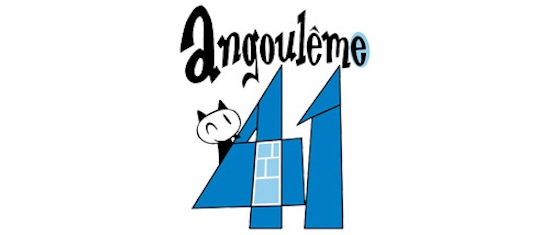A master magician shapes reality simply by speaking their will, and often just by thought alone. Ever since I decided I wanted to go to the Festival International de la Bande Dessinée d’Angoulême this year (‘bande dessinée’ being what the French call comics, literally ‘drawn strips’) and declared that I would, the world seemed to open up to make it happen. Even when I’d left it far past the last minute to book a hotel, I ended up in the attic room of a beautiful house just a 15 minute walk from the action.
Arriving late Wednesday night after somehow restraining myself from buying dozens of comics in the Paris shops (with a few hours spent battling temptation in the boutiques on Rue Dante), Angoulême greeted me warmly. A beautiful old city in the southwest of France. Its city centre, all cobbled streets surrounding a small castle (now the Hotel d’Ville), winds itself down the hill to the Charante river where on one side sits Le Vaisseau Moebius (‘vessel’ or ‘ship’ Moebius, a tribute to the French genius, Jean Giraud, with a nod to the spaceships featured in his work), the hall where this year’s excellent Tardi and Gus Bofa exhibits were held, and the Musée de la Bande Dessinée (Comics Museum) across the bridge. The Festival runs Thursday-Sunday and I was to find out that if you want to see any of the exhibits, Thursday is the day to go. Free from the crowds (the Festival brings in 200,000 people over the four days) squeezing shoulder to shoulder and queues running up to an hour that Friday and to an even greater extent Saturday would bring. Spend the rest of the time socialising, there’s plenty of that to be had.
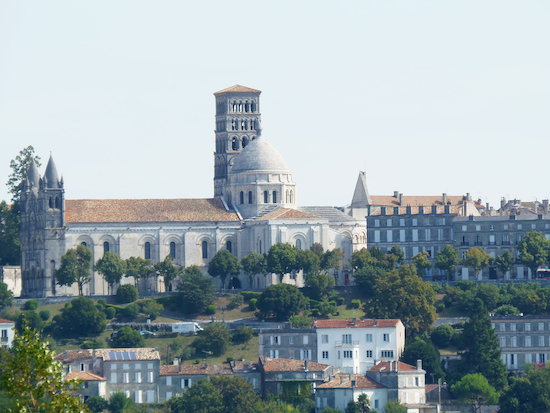
(© Office de Tourisme Angoulême)
First thing Thursday I wander into the Willem exhibit. Winner of last year’s Grand Prix d’Angoulême, Willem has put out an astounding amount of work in the past 50 years. The majority of which is outrageous – extreme political and religious satire, megaviolence, scatology, sexual and social grotesquery. Willem’s extensive travels have taken him through Eastern Europe, the Baltic, China, and The Ivory Coast, with nowhere on earth safe from his sardonic eye. I found myself standing next to the great man waiting to catch the train back to Paris on Monday and struck up a conversation. I found it difficult to reconcile this quiet, polite figure with his book ‘Anal Symphonies’ that I had seen for sale two days before, the cover of which features a woman sat atop a ceiling-high mountain of excrement from an overflowing toilet.
Perusing these pages hanging so innocently on the wall, at one point I thought I saw Dutch legend Joost Swarte walk in but on second glance realised I was mistaken. I had interviewed Swarte, a huge talent and the man who coined the term ‘ligne claire’ (clear line), for The Quietus two summers ago. Exiting the exhibit, I spied the word ‘Vegan’ in the window of the Galerie XXIV Café across the street. I wasn’t taking any chances in a foreign tongue with my dairy allergy and everyday hence I was to enjoy a bowl of their delicious vegetable soup. Rounding the corner to the front desk of the café, who should I see sitting directly in front of me? None other than Joost Swarte himself! I introduced myself and he was just as kind and full of interesting information as he was on the phone. He told me about a drinks reception for Willem that night at Chez Paul. "You need an invitation but I’m inviting you now". This was how invites worked in Angoulême. Once it was spoken, that was enough. Joost proceeded to tell me about what he and the 20 other Dutch artists who’d come down by bus (complete with an 8 hour breakdown at a service station) were working on – ‘Le Bédé Est Dans La Rue’.
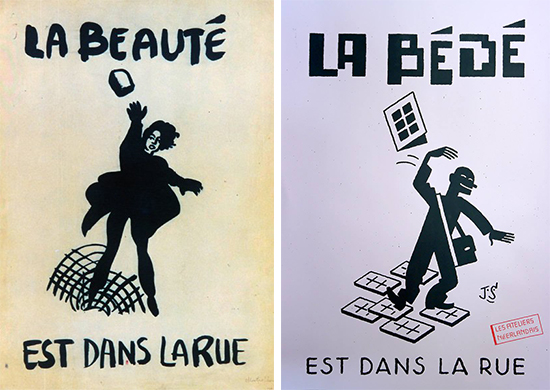
A tribute both to Willem’s activist past and ‘La Beauté Est Dans La Rue’ (‘Beauty Is In The Street’, here punning with bande dessinée->BD->bédé ‘Comics Are In The Street’), the Dutch were spending their days in the basement of Espace Franquin creating wonderful sloganeering posters which two young sisters, Anne and Eva Stalinski, illustrators themselves, would then paste all over town. Sjoerd van Ree is the man responsible for the intriguing way Les Ateliers Neérlandais (‘Dutch Workshop’, another tribute to the Situationists ‘Atelier Populaire’) were printing these posters. Expanding on his graduation project that used only materials found in his home to make a silk screen press, van Ree created for ‘the travelling Dutchmen’ two similar apparatuses out of old suitcases to which one would attach a vacuum cleaner. Combined with Gert Jan Pos and Joost Swarte’s idea for the posters and the immense talent of the Dutch artists, this made for quite a scene about town, with ripped and missing posters spotted everywhere. This also led me to my favourite discovery of the festival – the work of Hanco Kolk.
Captivating in its simplicity, a gorgeous illustration of a woman shouting immediately drew me in. I jotted down the name signed below it and hitting the Dutch workspace for the second of four total visits, I had a chance to sit down with Kolk for a quick chat about his work. Warm and enthusiastic, he told me he liked to use ‘as few lines as possible’ and pointed to a very sparse sketch of another alluring woman he’d done that day but ultimately rejected on the basis of having ‘too many lines’. Famous for his daily newspaper strip S1ngle and the satirical Meccano, where ‘wealthy people serve as the staff of the very richest individuals in the world in a small principality on the Mediterranean’, Kolk’s next book should be finished by the end of March. A collaboration with Kim Duchateau, The Man Of The Moment posits the idea that there is another species that inhabits our world but lives a zillion times faster than humans. We can’t see them and because of our slower pace we appear motionless to them. If these beings were to touch us, we’d only have two seconds to live. And thus the love story ensues when one of these accelerated ones falls for a human who has been poisoned by another. Kolk was greatly enjoying the festival telling me "Holland is a small country, we Dutch artists all know each other anyway. The great thing about us all being here altogether is that there’s no ego, everyone is working to make each other shine."
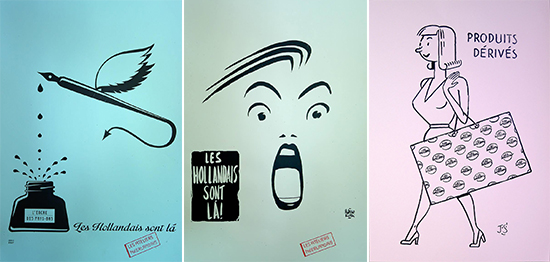
(posters by Erik de Graaf, Hanco Kolk, & Joost Swarte)
And shine they do. At Chez Paul that first night I was introduced to Typex, whose recent biography of Rembrandt (published by SelfMadeHero in English) everyone was raving about around town. I was to run into Typex everyday and it was always an interesting chat. When I looked him up on the internet after Chez Paul, I was shocked to see he was born in 1962. A warm and funny man, his youthful looks and demeanour had me thinking he was in his early 30s. We talked a lot about music as seemed to be the order of the day in Angoulême. On the whole I spent more time discussing music than I did comics, and returned to London with a list of bands to check out as long as books to buy.
What initially drew me to the festival this year was their flagship exhibition, ‘Tardi And The Great War’. I’ve long been a fan of this French master. You Are There, his collaboration with Jean-Claude Forest (of Barbarella fame), is a stylish slice of existential neuroses, the main character being ground down in a lifelong legal battle for his family’s estate of which he now only owns, and patrols, the walls. Tardi’s The Extraordinary Adventures of Adèle Blanc-Sec, turned into a wonderful film in 2010 by Luc Besson, is also excellent – picture a more occult Raiders Of The Lost Ark with a female lead. But Tardi’s great passion is The Great War, to which he has devoted much of his work. Through meticulous research and ingrained fervour (his grandfather fought in and would relate to him the horrors of the fronts), he expertly depicts the atrocities and absurdities of what was supposed to have been ‘the war to end all wars’. The panel below, looming large at the beginning of the exhibit, of a soldier hanging on a barbed wire fence with his guts spilling out into a pool of blood whilst shouting ‘Roll On The Armistice!’ perfectly sums up the profundity of Tardi’s work for me. The exhibit displayed page upon page, first in black and white then coloured, of Tardi’s two books on the subject – Putain de Guerre (‘Goddamn This War!’) and C’était la Guerre des Tranchées (‘It Was The War Of The Trenches’), both published in English by Fantagraphics. Walking through the rooms, the last filled with white crosses simulating graves, one encountered other curiosities – relevant recordings made with his wife, singer Dominique Grange, and a film of an unknown soldier dating from the time, the youth shy and awkwardly smiling towards the camera. Tardi took this man to be an emblem of who those in power were sending off to die and drew him into his work. After an hour of moving image by image through this brutally bleak but exceptionally honest account of senseless death and destruction one felt the full weight of it stepping out into the contrasting sunshine.
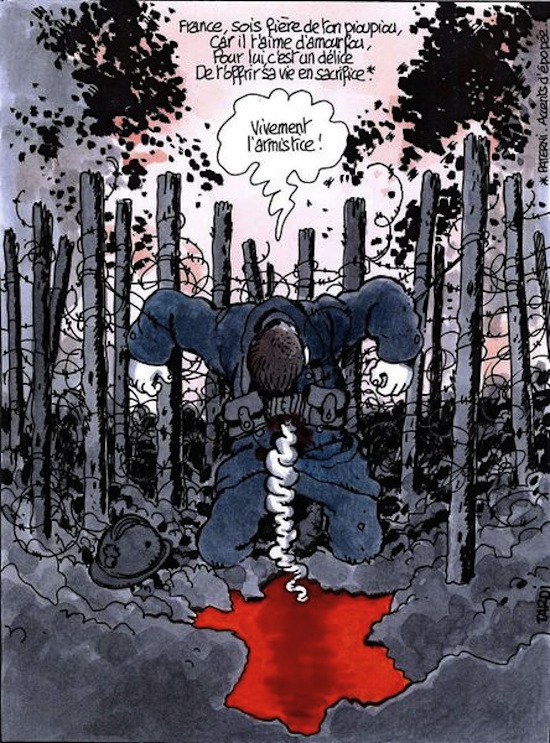
Paired with the Tardi exhibit for the centenary commemorations was ‘L’Adieu Aux Armes’ (A Farewell To Arms), celebrating the work of <a href="http://www.gusbofa.com/ target="out">Gus Bofa, an artist drawing at the time of WWI. Lighter, sometimes comical, but no less poignant than Tardi’s oeuvre, Bofa just as keenly captured the absurdity of it all. Particularly expressive are ‘Symphonie de la Peur’ (Symphony of Fear) from 1937 and ‘L’Optimiste’ showing a German general hanging himself in 1917. Bofa was drafted into WWI as an infantry soldier at the age of 31 but ‘after five months in battle, Bofa was badly injured and began traveling from hospital to hospital, refusing to let surgeons amputate his leg. In 1916, he returned home in ‘a mutated and discolored state.’ Despite being 65% disabled, Bofa re-learned to walk in 1917. Storing his war medals in a drawer, he began boxing and making art, focusing especially on writing, reading, and drawing.’ Bofa died in 1968, having produced a great amount of work, making a name for himself in the satirical press up until the 50s. He had fallen into obscurity but now thanks to Cornelius Editions, interest is growing again. And rightfully so.
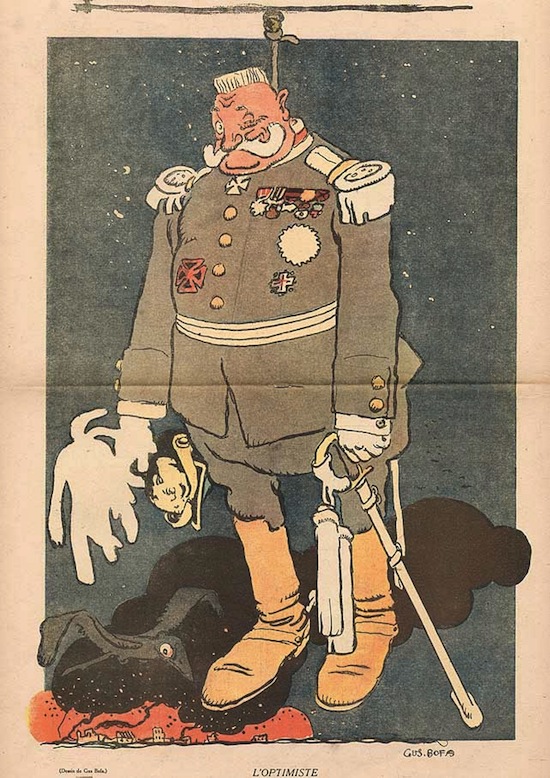
Across the river at the Comics Museum, a wonderful exhibit was on – ‘Nocturnes: le Rêve dans la Bande Dessinée’ (Dreams in Comics) – featuring fantastic work by David B, Joost Swarte, Yves Chaland, and Windsor McCay, amongst many others. With the pages posted on the walls, cream-coloured metal beds dotted the rooms, bent and twisted into surreal shapes, growing more ominous as one approaches the nightmare (‘Cauchemar’) section. Heralded by a literal giant white mare standing on the mattress above a sleeping porcelainlike child, further back a bed on eight spider’s legs looms over the rest, next to the relevant dream sequence from Tintin’s The Shooting Star. Highly recommended if you’re in town.
And back at the festival, what comics did I discover in the bustling Le Monde des Bulles? Most were found in the stands of publishers Paquet and Dargaud. I was delighted to see Le Jardin d’Hiver (‘The Winter Garden’) on Paquet’s shelves. A collaboration between Renaud Dillies (whose Abelard I’ve been raving about in the Quietus Comics Column, our interview here) and Grazia La Padula. La Padula was in attendance along with Mexican artist Tony Sandoval, the two having created Les Échoes Invisibles together. Although this book swims charmingly through the seasons, it is rooted in a pleasing autumnal melancholy. I had a chance to chat with Tony for a few minutes. Despite using the language to write, his work isn’t currently available in English. In fact, and I hate to disappoint, none of the books I mention in these two paragraphs are…yet. Tony was there with his new book Le Serpent d’Eau (‘The Watersnake’), recommended numerous times to me. The story of two lonely girls striking up a deep friendship and the mystical adventure that ensues.
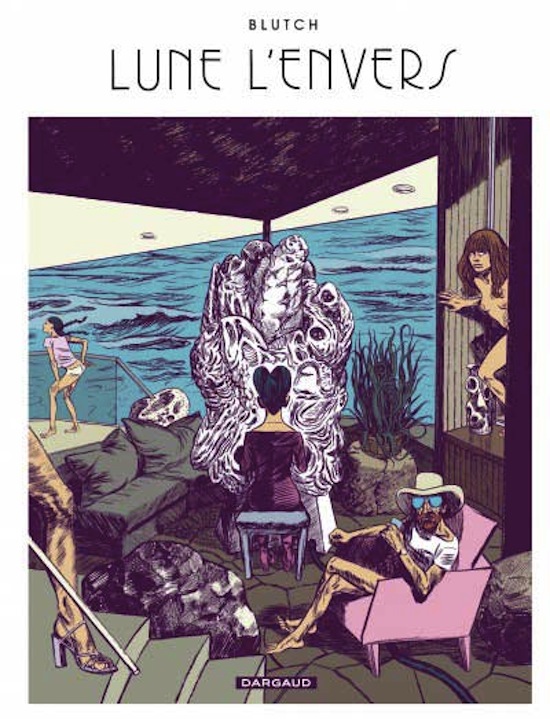
Over at the Dargaud tent, I was immediately struck by the cover to Blutch’s Lune L’Envers (‘Reverse Moon’) and flipping through the pages, the art continued to allure. Blutch was Angoulême’s Grand Prix winner in 2009. Also enticing is Thierry Smolderen & Dominique Bertail’s Ghost Money series. A tale of international intrigue post-9/11, this certainly looks exciting. As does Olivier Bocquet & Julie Rocheleau’s La Colère de Fantômas: Les Bois de Justice (‘The Wrath Of Fantômas: The Guillotine’). Beautifully rendered in the style of early 20th Century Paris, this is the first in a series about the legendary criminal mastermind.
There isn’t enough time to go into everything else but other highlights included meeting Tony Bennett of Knockabout Comics fame. A very charismatic and jovial man, always in the know about parties and press conferences around town, and always extending the invite to myself. The gorgeous home new publishers Rue de Sèvres held such a press conference in, complete with arched stone basement bar, as well as their plans to put out Hugo Pratt’s Fanfulla. The Glénat Gallery and its lovely limited edition of Tebo & Nicolas Keramidas’ Alice au Pays des Singes (‘Alice in Monkeyland’). And of course all the rows upon rows of enchanting old comics in the Espace Para BD.
I had an absolute blast. See you in 2015, Angoulême!

